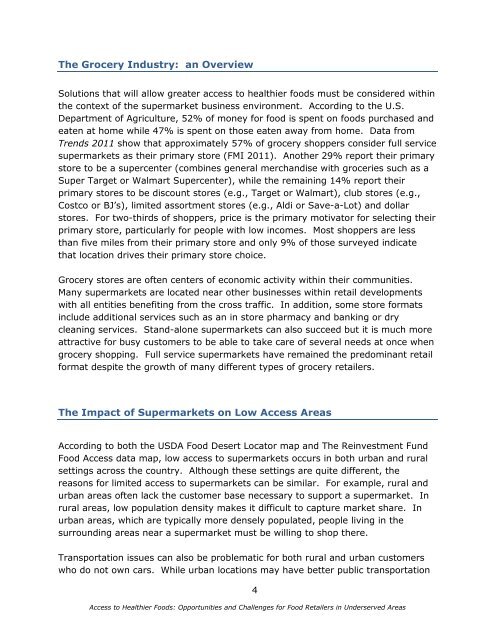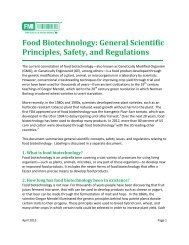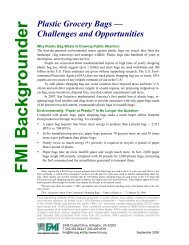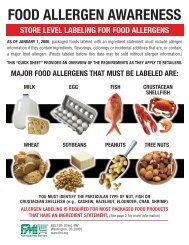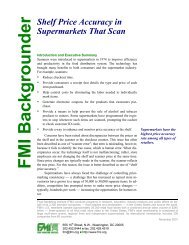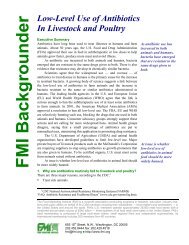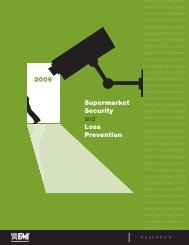Untitled - Food Marketing Institute
Untitled - Food Marketing Institute
Untitled - Food Marketing Institute
Create successful ePaper yourself
Turn your PDF publications into a flip-book with our unique Google optimized e-Paper software.
The Grocery Industry: an Overview<br />
Solutions that will allow greater access to healthier foods must be considered within<br />
the context of the supermarket business environment. According to the U.S.<br />
Department of Agriculture, 52% of money for food is spent on foods purchased and<br />
eaten at home while 47% is spent on those eaten away from home. Data from<br />
Trends 2011 show that approximately 57% of grocery shoppers consider full service<br />
supermarkets as their primary store (FMI 2011). Another 29% report their primary<br />
store to be a supercenter (combines general merchandise with groceries such as a<br />
Super Target or Walmart Supercenter), while the remaining 14% report their<br />
primary stores to be discount stores (e.g., Target or Walmart), club stores (e.g.,<br />
Costco or BJ’s), limited assortment stores (e.g., Aldi or Save-a-Lot) and dollar<br />
stores. For two-thirds of shoppers, price is the primary motivator for selecting their<br />
primary store, particularly for people with low incomes. Most shoppers are less<br />
than five miles from their primary store and only 9% of those surveyed indicate<br />
that location drives their primary store choice.<br />
Grocery stores are often centers of economic activity within their communities.<br />
Many supermarkets are located near other businesses within retail developments<br />
with all entities benefiting from the cross traffic. In addition, some store formats<br />
include additional services such as an in store pharmacy and banking or dry<br />
cleaning services. Stand-alone supermarkets can also succeed but it is much more<br />
attractive for busy customers to be able to take care of several needs at once when<br />
grocery shopping. Full service supermarkets have remained the predominant retail<br />
format despite the growth of many different types of grocery retailers.<br />
The Impact of Supermarkets on Low Access Areas<br />
According to both the USDA <strong>Food</strong> Desert Locator map and The Reinvestment Fund<br />
<strong>Food</strong> Access data map, low access to supermarkets occurs in both urban and rural<br />
settings across the country. Although these settings are quite different, the<br />
reasons for limited access to supermarkets can be similar. For example, rural and<br />
urban areas often lack the customer base necessary to support a supermarket. In<br />
rural areas, low population density makes it difficult to capture market share. In<br />
urban areas, which are typically more densely populated, people living in the<br />
surrounding areas near a supermarket must be willing to shop there.<br />
Transportation issues can also be problematic for both rural and urban customers<br />
who do not own cars. While urban locations may have better public transportation<br />
Access to Healthier <strong>Food</strong>s: Opportunities and Challenges for <strong>Food</strong> Retailers in Underserved Areas<br />
4


